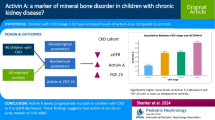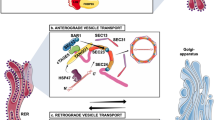Abstract
Articular cartilage, unlike growth plate cartilage, is specialized to not undergo matrix calcification. However, articular cartilage mineralization, in the form of CPPD (chondrocalcinosis) and hydroxyapatite crystals, frequently accompanies and complicates osteoarthritis and aging. Recent work has demonstrated that certain features of growth cartilage development and mineralization are shared in degenerative cartilage. These include chondrocyte proliferation, hypertrophy and increased apoptosis. Moreover, parathyroid hormone related protein (PTHrP), one of the central mediators of endochondral development, is abundant in osteoarthritic cartilage. Cartilage PPi elaboration and cytosolic transglutaminase activity are markedly increased with aging. Only recently have the molecular identities been defined for the chondrocyte inorganic pyrophosphate (PPi)-generating isozymes of the phosphodiesterase nucleotide pyrophosphatase (PDNP) family (including PC-1 and B10), and for transglutaminase in articular cartilage. This review focuses on the evolving understanding of the potential roles, in articular cartilage calcification, of PTHrP, PDNP family enzymes, PPi metabolism, and transglutaminase activity.
Similar content being viewed by others
References and Recommended Reading
Chung UI, Lanske B, Lee K. et al.: The parathyroid hormone/ parathyroid hormone-related peptide receptor coordinates endochondral bone development by directly controlling chondrocyte differentiation. PNAS 1998, 95:13030–13035.
Gerstenfeld LC, Shapiro FD: Expression of bone-specific genes by hypertrophic chondrocytes: implication of the complex functions of the hypertrophic chondrocyte during endo-chondral bone development. J Cell Biochem 1996, 62:1–9.
Amling M, Neff L, Tanaka S, et al.: Bcl-2 lies downstream of parathyroid hormone-related peptide in a signaling pathway that regulates chondrocyte maturation during skeletal development. J Cell Biol 1997, 136:205–213.
Duprez D, Bell EJ, Richardson MK, et al.: Overexpression of BMP-2 and BMP-4 alters the size and shape of developing skeletal elements in the chick limb. Mech Dev 1996, 57 145–157.
Carey DE, Liu X: Expression of bone morphogenetic protein-6 messenger RNA in bovine growth plate chondrocytes of different size. J Bone Min Res 1995, 10:401–405.
Terkeltaub R, Johnson K, Rohnow D, et al.:Bone Morphoge-netic Proteins (BMPs) and bFGF exert opposing regulatory effects on PTHrP expression and inorganic pyrophosphate elaboration in immortalized murine endochondral hyper-trophic chondrocytes. J Bone Min Res 1998, 13:931–941.
Terkeltaub R, Lotz M, Johnson K, et al.: Parathyroid hormone related protein (PTHrP) expression is abundant in osteo-arthritic cartilage, and the PTHrP 1-173 isoform is selectively induced by TGFb in articular chondrocytes, and suppresses extracellular inorganic pyrophosphate generation. Arthritis Rheum 1998, 41:2152–2164. This paper demonstrated that PTHrP expression is increased in osteoarthritic cartilage, and revealed selective expression of one isoform, PTHrP 1-173, and a unique function for this isoform.
Johnson K, Moffa A, Pritzker K, et al.: Matrix vesicle Plasma Cell Membrane Glycoprotein-1 (PC-1) regulates mineraliza-tion by murine osteoblastic MC3T3 cells. J Bone Min Res 1999, 14:883–892.
Johnson K: Differential mechanisms of PPi production b Plasma Cell Membrane Glycoprotein-1 (PC-1) and B10 in chondrocytes. Arthritis Rheum 1999, in press. This paper characterized in detail the differential subcellular localiza-tions and functions of the 2 major PPi-producing NTPPPH isozymes in articular cartilge, PC-1 and B10.
Vortkamp A, Lee K, Lanske B, et al.: Regulation of rate of cartilage differentiation by Indian hedgehog and PTH-related protein. Science 1996, 273:613–622.
Serra R, Karaplis A, Sohn P: Parathyroid hormone-related peptide (PTHrP)-dependent and -independent effects o transforming growth factor beta (TGF-b) on endochondral bone formation. J Cell Biology 1999, 145:783–794.
Amizuka N, Henderson JE, Hoshi K, et al.: Programmed cell death of chondrocytes and aberrant chondrogenesis in mice homozygous for parathyroid hormone-related peptide gene deletion. Endocrinology 1996, 137:5055–5067.
Weir EC, Philbrick WM, Amling M, et al.: Targeted overexpres-sion of parathyroid hormone-related peptide causes chon-drodysplasia and delayed endochondral bone formation. Development Biol 1996, 93:10240–10245.
Deng C, Wynshaw-Boris A, Zhou F, et al.: Fibroblast growth factor receptor 3 is a negative regulator of bone growth. Cell 1996, 84:911–921.
Pedrozo HA, Schwartz Z, Mokeyev T, et al.: Vitamin D3 metab-olites regulate LTBP1 and latent TGF-b1 expression and latent TGF-b1 incorporation in the extracellular matrix of chondrocytes. J Cell Biochem 1999, 72:151–165.
Gerber HP, Vu TH, Ryan AM, et al.: VEGF couples hypertrophic cartilage remodeling, ossification and angiogenesis during endochondral bone formation. Nature Med 1999, 5:623–628.
Eerola I, Salminen H, Lammi P, et al.: Type X collagen, a natu-ral component of mouse articular cartilage: association with growth, aging, and osteoarthritis. Arthritis Rheum 1998, 41:1287–1295.
Kirsch T, Nah HD, Shapiro IM, et al.: Regulated production of mineralization-competent matrix vesicles in hypertrophic chondrocytes. J Cell Biol 1997, 137:1149–1160.
Serra R, Johnson M, Filvaroff EH, et al.: Expression of a trun-cated, kinase-defective TGF-b type II receptor in mouse skele-tal tissue promotes terminal chondrocyte differentiation and osteoarthritis. J Cell Biol 1997, 139:541–552.
Moos V, Fickert S, Muller B, et al.: Immunohistological analysis of cytokine expression in human osteoarthritic and healthy cartilage. J Rheumatol 1999, 26:870–879.
Rosen F, McCabe G, Quach J, et al.: Differential effects of aging on human chondrocyte responses to TGFb: Increased pyrophosphate production and decreased cell proliferation. Arthritis Rheum 1997, 40:1275–1281. This paper revealed that chondrocytes from aged human subjects proliferate less but elaborate more PPi in response to TGFb.
Ishikawa K, Masuda I, Ohira T, et al.: A histological study of calcium pyrophosphate dihydrate crystal-deposition disease. J Bone Joint Surg. American Volume 1989, 71:875–886.
Rosenthal AK, Henry LA: Thyroid hormones induce features of the hypertrophic phenotype and stimulate correlates of CPPD crystal formation in articular chondrocytes. J Rheumatol 1999, 26:395–401.
Hashimoto S, Ochs RL, Komiya S, et al.: Linkage of chondro-cyte apoptosis and cartilage degradation in human osteo-arthritis. Arthritis Rheum 1998, 41:1632–1638.
Blanco FJ, Guitian R, Vazquez-Martul E, et al.: Osteoarthritis chondrocytes die by apoptosis. A possible pathway for osteoarthritis pathology. Arthritis Rheum 1998, 41:284–189.
Kuhn K, Hashimoto S, Lotz M: Cell density modulates apopto-sis in human articular chondrocytes. J Cell Physiol 1999, 180:439–447.
Lotz M: The role of nitric oxide in articular cartilage damage. Rheum Dis Clin North Am 1999, 25:269–282.
Hashimoto S, Ochs RL, Rosen F, et al.: Chondrocyte-derived apoptotic bodies and calcification of articular cartilage. PNAS 1998, 95:3094–3099.
Ryan LM, Kurup IV, Cheung HS: Transduction mechanisms of porcine chondrocyte inorganic pyrophosphate elaboration. Arthritis Rheum 1999, 42:555–560.
Rosenthal AK, Ryan LM: Ageing increases growth factor-induced inorganic pyrophosphate elaboration by articular cartilage. Mechanisms of Ageing and Development 1994, 75 35–44.
Lotz M, Rosen F, McCabe G, et al.: Interleukin 1 beta suppresses transforming growth factor-induced inorganic pyrophosphate (PPi) production and expression of the PPi-generating enzyme PC-1 in human chondrocytes. PNAS 1995, 92:10364–10368.
Goding J, Terkeltaub R, Maurice M, et al.: Ecto-phospho-diesterase/ pyrophosphatase of lymphocytes and non-lymphoid cells: structure and function of the PC-1 family. Immunology Reviews 1998, 161:11–26.
Cardenal A, Masuda I, Haas AL, et al.: Specificity of a porcine 127-kd nucleotide pyrophosphohydrolase for articular tissues. Arthritis Rheum 1996, 39:245–251.
Ryan LM, Kurup IV, Derfus BA et al.: ATP-induced chondro-calcinosis. Arthritis Rheum 1992, 35:1520–1525.
Lorenzo P, Bayliss MT, Heinegard D: A novel cartilage protein (CILP) present in the mid-zone of human articular cartilage increases with age. J Biol Chem 1998, 273:23463–23468. This paper described the increased expression of CILP in the mid-zone interterritorial matrix of aging cartilage, the area in which CPPD crystals generally deposit in chondrocalcinosis. CILP has not yet been established to have enzyme activity, however.
Lorenzo P, Neame P, Sommarin Y, et al.: Cloning and deduced amino acid sequence of a novel cartilage protein (CILP) identifies a proform including a nucleotide pyrophospho-hydrolase. J Biol Chem 1998, 273:23469–23475.
Masuda I, Halligan BD, Barbieri JT, et al.: Molecular cloning and expression of a porcine chondrocyte nucleotide pyrophosphohydrolase. Gene 1997, 197:277–287.
Scott LJ, Delautier D, Meerson NR, et al.: Biochemical and molecular identification of distinct forms of alkaline phosphodiesterase I expressed on the apical and basolateral plasma membrane surfaces of rat hepatocytes. Hepatology 1997, 25:995–1002.
Okawa A, Nakamura I, Goto S, et al.: Mutation in Npps in a mouse model of ossification of the posterior longitudinal ligament of the spine. Nature Gen 1998, 19:271–273. This paper linked deficient PC-1 expression to hydroxyapatite deposi-tion in mouse articular cartilage, and to an enthesopathic hypermin-eralizing disorder.
Anderson HC: Molecular biology of matrix vesicles Clin Orthopaed Rel Res 1995, 314:266–280.
Greenberg CS, Birckbichler PJ, Rice RH: Transglutaminases: Multifunctional crosslinking enzymes that stabilize tissues. FASEB J 1991, 5:3071–3078.
Kojima S, Nara K, Rifkin DB: Requirement for Transglutami-nase in the activation of latent Transforming Growth Factor-b in bovine endothelial cells. J Cell Biol 1993, 121:439–448.
Aeschlimann D, Mosher D, Paulsson M: Tissue transglutami-nase and factor XIII in cartilage and bone remodeling. Semin Thromb Haemostas 1996, 22:437–443.
Rosenthal AK, Derfus BA, Henry LA: Transglutaminase activity in aging articular chondrocytes and articular cartilage vesicles. Arthritis Rheum 1997, 40:966–970. s paper linked increased tissue TGase activity to aging in porcine articular cartilage
Borge L, Demignot S, Adolphe M: Type II transglutaminase expression in rabbit articular chondrocytes in culture: relation with cell differentiation, cell growth, cell adhesion and cell apoptosis. Biochim Biophys Acta 1996; 1312:117–124.
Nurmiskaya M, Magee C, Nurminsky D, et al.: Plasma trans-lutaminase in hypertrophic chondrocytes: Expression and cell-specific intracellular activation produce cell death and externalization; J Cell Biol 1998, 142(4):1135–1144.
Melino G, Piacentini M: Tissue transglutaminase in cell death: a downstream or a multifunctional upstream effector? FEBS Let 1998, 430:59–63.
Aeschlimann D, Wetterwald A, Fleisch H, et al.: Expression of tissue transglutaminase in skeletal tissues correlates with events of terminal differentiation in chondrocytes. J Cell Biol 1993, 120:1461–1470.
Zhang J, Lesort M, Guttmann RP, et al.: Modulation of the in situ activity of tissue transglutaminase by calcium and GTP. J Biol Chem 1998, 273:2288–2295.
Iwamoto M, Shapiro IM, Yagami K, et al.: Retinoic acid induces rapid mineralization and expression of mineralization-related genes in chondrocytes. Exp Cell Res 1993, 207:413–420.
Expression of tissue transglutaminase in the developing chicken limb is associated both with apoptosis and endo-chondral ossification. Cell Death Diff, 1999, 6:146–154.
Lajemi M, Demignot S, Adolphe M: Detection and character-ization, using fluoresceincadaverine, of amine acceptor protein substrates accessible to active transglutaminase expressed by rabbit articular chondrocytes. Histochem J 1998, 30:499–508.
Author information
Authors and Affiliations
Rights and permissions
About this article
Cite this article
Karpouzas, G.A., Terkeltaub, R.A. New developments in the pathogenesis of articular cartilage calcification. Curr Rheumatol Rep 1, 121–127 (1999). https://doi.org/10.1007/s11926-999-0008-2
Issue Date:
DOI: https://doi.org/10.1007/s11926-999-0008-2




